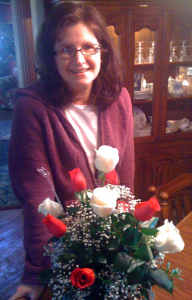It seemed like a good idea at the time.
Last week when I was in the Netherlands (See “Putting the ‘Global’ in SMUG”) I had the opportunity on Wednesday to help lead a couple of master classes on Web 2.0 for health care communicators from UMC Radboud, one of six academic medical centers in the Netherlands, in Nijmegen.
I often like to demonstrate Skype and its videoconferencing capabilities (and the fact that it’s FREE) in my presentations. It’s one thing to say, “Skype is like the video phone in The Jetsons.” That gets heads nodding. But it’s entirely different to show just how easy and cool it is. So I have sometimes Skyped with my daughter Rachel and granddaughter Evelyn, and also have done videoconferences with Darrin Nelson (a Mayo patient from Rochester, NY who shared his story about robotic heart surgery here, here, here and here on Sharing Mayo Clinic.) In those cases I had sent messages on Facebook (for Rachel) or Twitter (for Darrin) to arrange the times for our conversations and to ensure that they would be available.
Our Wednesday morning master class in Nijmegen went off flawlessly, as @JohnSharp and @CiscogIII and I tag-teamed as teachers, but in the afternoon they had to head back to Amsterdam, so I was on my own (along with my host, Lucien Engelen.)
I was doing fine until I got to the reference in my slides to Skype, and then I got what I thought was a great idea: I went to Skype and saw that my lovely wife, Lisa, was on-line.
So (on the spur of the moment, not to mention a classic case of y-chromosome poisoning), I decided to just “surprise” Lisa with a Skype call without advance warning. I’ll let the Facebook conversation she started tell the rest (click to enlarge):
Lesson Learned: Privacy isn’t just something to be concerned about from a HIPAA perspective. It begins at home.
And a special note of thanks to Lucien for providing his own peace offering (although he personally had done nothing to offend), in the form of this beautiful bouquet of roses, pictured below next to my now fully showered bride of nearly 25 years.
